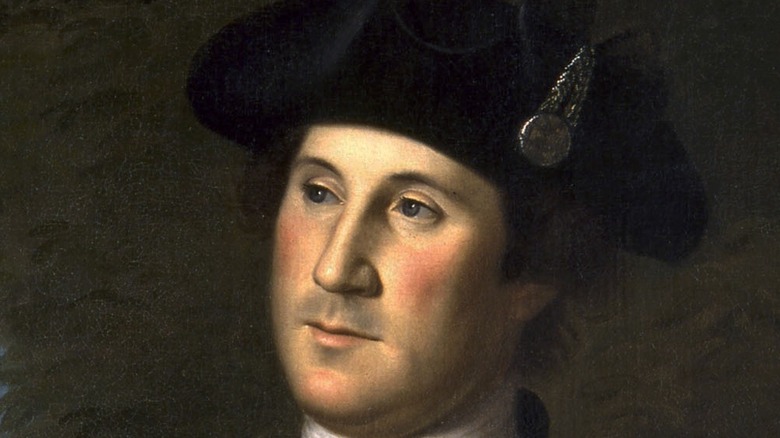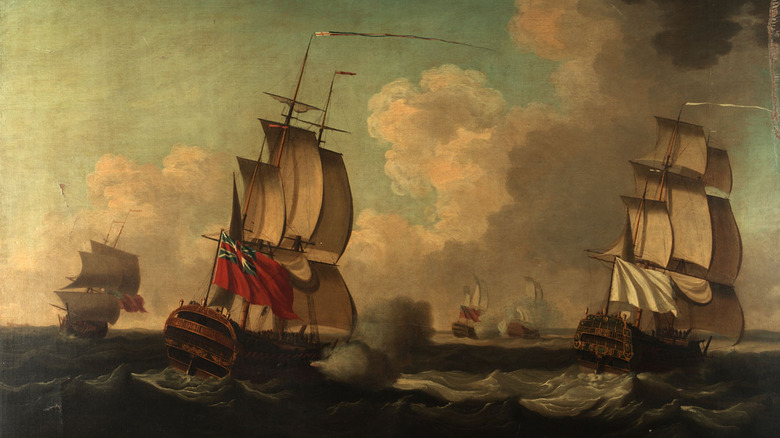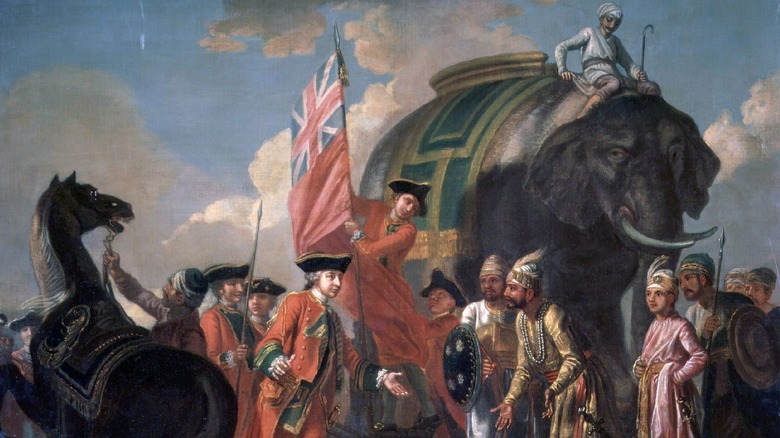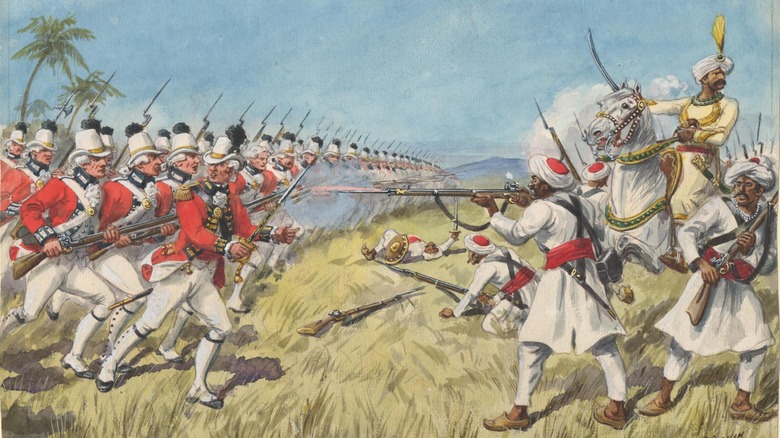How George Washington Helped Ignite A World War
George Washington is remembered as one of the most important figures in American history. For all of the thought that went into how the republic would operate, it would have all been for nothing were there nobody to lead the Continentals in battle. While he is far from the sole reason America won its independence, Washington was unquestionably an inspirational figure during and after the revolution. Yet the long series of events that led to him becoming America's first president may not have unfolded as they did were it not been for his actions in what we now call Ohio decades earlier.
In the early 1750s, tensions between the French and British in North America were at an all-time high. In the area of the Ohio River Valley, forces from both sides were vying for control over the region as the French began to establish forts there. Virginia Lieutenant Governor Robert Dinwiddie took it upon himself to meet the French threat by sending a force to demand their withdrawal (via History). Washington, then a major of the Virginia provincial militia, was initially tasked with delivering this demand to the French in 1753. When the demand was rebuffed, Washington was ordered to attack them the following year, per the National Park Service.
Washington's first combat experience helped trigger a global conflict
At the age of just 22, Major Washington led his men in what became known as the Battle of Jumonville Glen (Jumonville Glen being a French fort). Certain that nearby French soldiers and allied Natives intended to attack, Washington struck the first blow in what was, initially, a very successful surprise attack (via Britannica). This was his first time seeing combat and might have earned him great accolades from the crown. However, several of Washington's Iroquois allies began to kill the French prisoners in brutal fashion, leaving nine dead before they were stopped. The French learned of the brutal executions after a prisoner managed to escape, after which they attacked Washington's position and caused him to withdraw.
At the subsequent Battle of Fort Necessity, Washington was forced into his first and only surrender. While he and his men were released soon after, the skirmish led to an immediate build-up of British and French soldiers in North America, marking an escalation of the conflict that would lead to the French and Indian War (though a formal state of war was not established until 1756). This conflict was substantial in its own right, lasting for years as British, French, and Native tribes fought one another until 1763. The French were ultimately defeated and were forced to surrender all of their territory, leaving French-speaking communities, such as the Cajuns, under British authority. However, this became just one theater of the larger Seven Years' War.
Britain saw unprecedented military victories across the world
During this period, the two factions fought wherever they found themselves or the other's allies coexisting. In addition to North America, Britain, France, and their regional allies predominantly fought in mainland Europe, the Caribbean, western Africa, southern India, and the Philippines (via Mount Vernon). Across these regions, French allies included Sweden, Russia, Spain (and its colonies), Saxony, and the Mughal Empire (via WorldAtlas). Britain's included Portugal, Hanover, Hesse-Kassel, and Prussia.
The British pathway to victory not only led to British hegemony in eastern North America, but also the establishment of Prussia as a military power, this furthered weakening of indigenous rule in India, and even the dampening of rival colonial power in Asia. The French-allied Bengal Subah, a breakaway state of the Mughal Empire, saw a complete loss of independence when it was captured by the British East India Company in 1757. Later in 1762, British naval forces captured the Philippine capital of Manila, which was only returned to Spain with the signing of the Treaty of Paris two years later (via We Are The Mighty).
As was the case in the 20th century, one world war led to another
Not only was this a massive number of simultaneous theaters, but during the later American Revolution, many of these locations once again became places where France and Britain did battle. Similarly to how the events of World War I fed into the causes of World War II, the American Revolution was itself a direct consequence of the Seven Years' War, as it was because of the preceding conflict's cost that Parliament and King George III levied new taxes on the colonies.
1783 marked the end of the last battle in direct relation to the American Revolution, that being the Siege of Cuddalore in India (via All Things Liberty). The battle ended in an armistice between the British and the French, meaning that the latter were not totally displaced from the subcontinent as they were in North America. However, from this point onward, the British began to cultivate India as a new source of colonial power, eventually gaining unrivaled hegemony over the region (via DailyHistory). Meanwhile, the major they ordered to attack a French fort thirty years earlier was now the executive power of their former American colonies.



